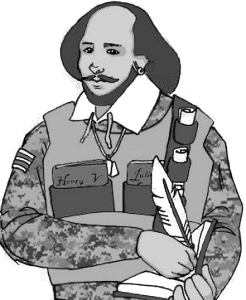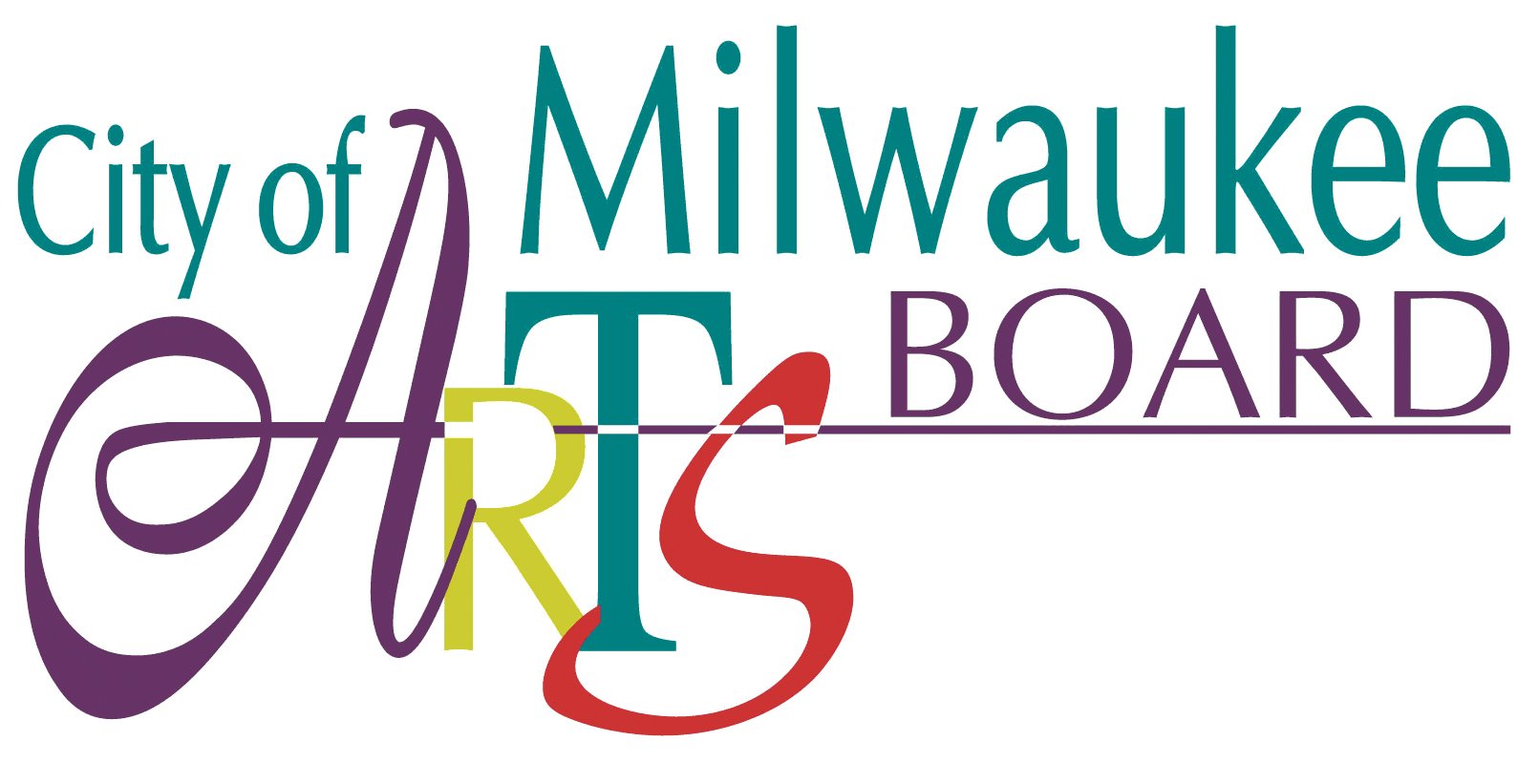Bill and Nancy work with participants.
Last weekend, Oct. 4, 5 and 6, we completed our third Shakespeare intensive at the Milwaukee VA. I had every intention of sitting down Monday morning and writing about what a profound and transformational experience it was for all involved. It was. But I would sit at the computer and stare at the blank page, go to my Complete Works and try and find a quote that would spark something and then find something around the house that needed to be done instead.
In part, it felt a little like breaking a confidentiality. How could I talk about the journey of the weekend without speaking to some of the individual stories, vulnerabilities and milestones? In order to illustrate the spectacular courage of our participants, I would need to speak to the fragility as well.
In another part, there is little to say to anyone who wasn’t there other than that it was transformational, healing and a pleasure.
Today, with Tomra (see Vets Voices), I spoke to the PR people at the VA, trying to explain who we are, what we do and why we do it, and how it works. Except for who we are, these are all questions we have been wrestling with from the start, and as we continue to talk out loud to people about it, we begin to find some understanding of it for ourselves. So as this, our third Milwaukee intensive, has allowed the picture to begin to form, that is what I will write about now.
The structure of the work has changed little from our initial concept of what would allow us to get these men and women up on their feet, speaking the words of Shakespeare. We spend some time getting to know each other, there is an exercise that helps them to begin to connect on a deeper level with every other person in the room and introduces the special technique we use to get them working on a scene. Then Bill and Jim and I put our heads together and cast scenes.
The special technique is a modified version of a process that was invented at Shakespeare and Co. in Lenox, MA more than 30 years ago. The founders there were so dedicated to the words and the intensely personal process of acting that they came up with the idea of “feeding” the lines to each other so no one would have to carry and read out of a script. What this technique allows us to do is take the stress of having to read difficult language out of the picture. It allows us to literally have their back, giving them the words to say, offering them definitions of words and phrases and asking some questions as to what the emotions of these moments might be for them.
Fellow participants and guests at the “witnessing”
The second day we check in with people; we do one of a handful of acting exercises that are designed to illicit something – whatever we intuit might be best for each group dynamic – and then we spend the day working, two at a time, on scenes from plays by Shakespeare.
The third day, again we check in, and then we give them a set of instructions about how to turn the story of the scene they are working on into a series of gestures and movements. We ask them to “physicalize” the scene. And then we invite people in to “witness” the ongoing work.
That form has changed very little from the first weekend, nearly a year ago, where we – the facilitators of this event – came into the room, quivering jello on the inside, not knowing what was going to happen or even if anyone would show up. But show up they did and we did our stuff and, with tears and laughter and William Shakespeare’s words, we created our first little community.
And they keep showing up. I mean SHOWING UP. It isn’t just that they attend our weekend intensive, but they, by the end of the first evening, make a commitment to us and to each other to bring all of themselves to this event.
So I guess that is a big part of WHY we do what we do.
How it works? I can, and will eventually, talk about the science of the brain function of emotions and what is emerging in the work to heal trauma but we knew little of that when we entered into this and although it’s important to us and endlessly fascinating, we are artists, not scientists or psychologists. We tell the participants at our first interaction that what brought any artist to any art form was a desire to express what was inside them. For most artists that thing inside is pain that they seek to alleviate. In the case of actors, there is also, not unlike many of those entering the military, a longing for family, community, belonging to something that gives meaning. That brings us to the subject of “how it works”.
Stories give meaning to the unexplainable. Actors tell stories. Shakespeare tells, in beautiful, metaphorical language, our most compelling stories. For many of our veteran participants, they have untold stories. We give them an opportunity to tell their deepest, darkest stories out loud with the veil of someone else’s words and the mask of character.
Sometimes big emotions come out of that telling and instead of being shamed or told to “man up” or being ignored, actors not only tolerate – we celebrate! A comfortable facility with one’s emotions, a range of emotions, is one of the most important things in a satisfying life and in healthy relationships. Through working on scenes, these men and women get to experiment with what that looks and feels like, in a safe and supportive environment.
That’s my best explanation of how this is working. Our vets have told us it’s working better than therapy and they come back, sometimes having waited months, to work with us again.
Our next intensive is set for December. Check out our events calendar.
I know that when I began this blog I promised next (actually, I promise to get to it “tomorrow”!) to talk about why Shakespeare? I have turned that assignment over to Bill and given him a deadline so stay tuned! And take care of each other.
All of this began because of the enormous amount of inquiry and dialogue going on about how to best help veterans after they return to their communities. As actors and educators we, the founders of Feast of Crispian, had been deeply aware as to what the skills required to be an actor could offer people in emotional pain. Many of us came to the theater to deal with our own trauma or developmental struggles, and through the particular tools for educating and training that it takes a person to stand on a stage and fully communicate important human stories, we also found healing.
Now, I am biased, but I find acting, above all other art forms, to be uniquely suited to this. There is gorgeous, healing and powerful work going on in the veterans community right now, with visual artists, writers, musicians and dancers, that has and will continue to change lives. No one understands how to give expression to the inexpressible and voice to the unspeakable like artists of all kinds. However, the combination of voice and physicality further coupled with the search for meaning that acting offers activates multiple parts of the brain. Putting that face to face with a “unit” of scene partners strengthens human connections. Bring all of that in front of an audience to be witnessed and witnesses are changed too.
Theater is the soldiers art form. Theater, as we know it today, was begun to allow the warriors’ community to gather and hear the stories of battle. And they did. The entire populations of towns would come together to share in the excitement, the horror, the fear, the great deeds of bravery and strength. Together a community would honor and care for their defenders.
Little community sharing of any kind goes on these days and we would like to find some small remedy to that.
Yes, we do that with Shakespeare. Why Shakespeare, you ask? I’ll get to that on some tomorrow.



